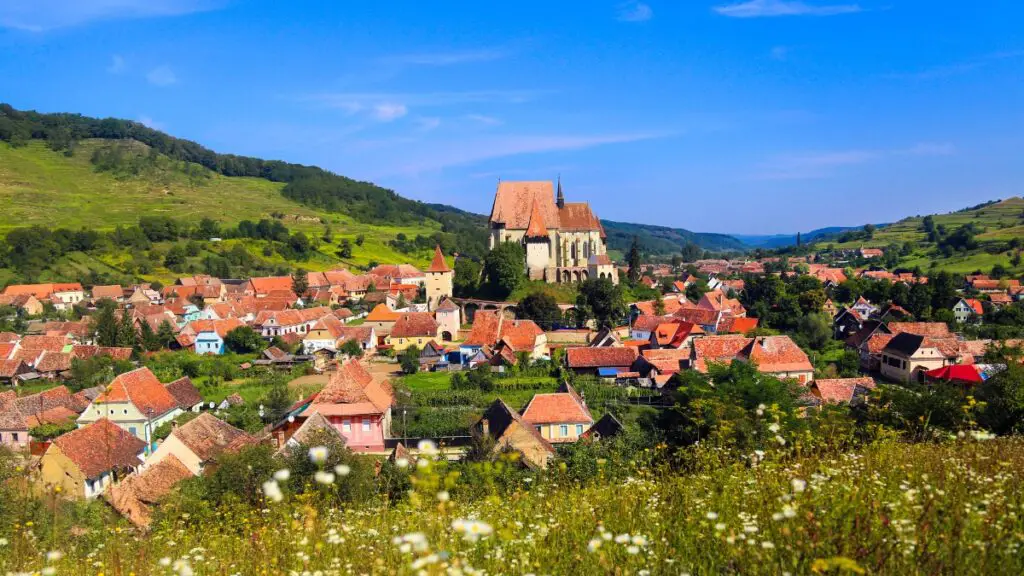This post may contain affiliate links. At no cost to you, purchases made through these links may result in a small commission for Traveling Transylvania. We never recommend products that we don’t know and trust. Thank you for your continued support!
Have you ever wished to set foot in a place that feels as though it’s been plucked straight out of a fairy tale? A place where history, enchantment, and a touch of mystery dance together under the Transylvanian sky? Enter Biertan. Nestled within the scenic embrace of Transylvania, this beautiful village is nothing short of magical.
As you wander its cobbled streets, every stone and spire whispers tales from the annals of time. And towering over this quaint village is the majestic Biertan Fortified Church, a beacon of history and an emblem of the village’s resilience. Believe me, when you stand before it, you’re not just looking at an architectural marvel—you’re stepping into a time capsule.
But wait, there’s a twist. The church holds a curious secret, one that involves couples, legends, and a rather unique approach to mending broken relationships. Intrigued? You should be.
Biertan is not just a destination—it’s a journey back in time, an exploration of legends, and an invitation to experience the untouched beauty of Romania.
Whether you’re there for the history, the stories, or the sheer beauty of it all, Biertan promises a tapestry of experiences that will linger long after your visit. Welcome to the heart of Transylvania. Welcome to Biertan.
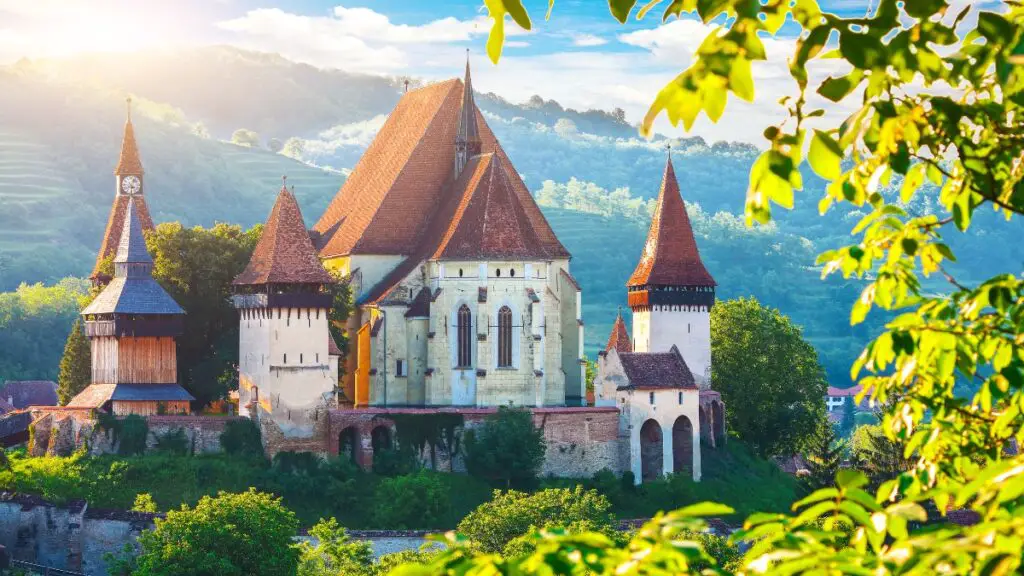
History of Biertan Village
From Saxon Beginnings to UNESCO Recognition
Nestled deep within Transylvania’s heart, Biertan is more than just a quaint village—it’s a living tapestry of Transylvanian history and culture. Founded in the 13th century by the Saxons, Biertan became an essential cultural and economic hub during medieval times.
The Saxons, originally from the Germanic regions, were invited by Hungarian kings to settle in Transylvania. They brought with them not just their robust architectural skills but also a deep-rooted sense of community, both of which have left an indelible mark on Biertan.
The star of the village is undoubtedly the Biertan Fortified Church. Constructed between the 15th and 16th centuries, this architectural marvel was the see of the Evangelical Diocese in Transylvania for nearly three centuries. Its significance isn’t merely architectural; it stands as a testament to the village’s importance and the lengths the community went to protect their spiritual and cultural heartland.
Over the years, the church underwent various modifications, incorporating both Gothic and Renaissance elements, making it not just a religious structure but also an evolving piece of art. It’s this blend of historical significance and architectural beauty that earned it a spot on the UNESCO World Heritage list, along with the six other Villages with Fortified Churches of Transylvania, in 1993.
Village Life Through the Ages
Biertan, throughout history, wasn’t just defined by its grand church. It was the bustling life within its walls that added depth to its narrative. The village was designed in a specific way to ensure security, with three fortified walls encircling it, a clear testament to the turbulent times of invasions and wars.
Yet, amidst these fortifications, life thrived. The Saxon settlers introduced advanced agricultural techniques, turning the region into a fertile haven. Craftsmen, traders, and farmers filled the village streets, making it a buzzing economic hub in medieval Transylvania.
However, the passage of time saw its challenges. While the village survived Tartar and Ottoman invasions, it faced population declines, especially in the 20th century as the Saxon population emigrated. Yet, Biertan stood resilient, preserving its heritage and stories.
Biertan Today
Today, a walk through Biertan is like traveling through time. The whispers of Saxon settlers, the echoes of medieval traders, and the silent songs of craftsmen linger in its air. It’s a village that wears its history with pride, inviting all to partake in its timeless tales.
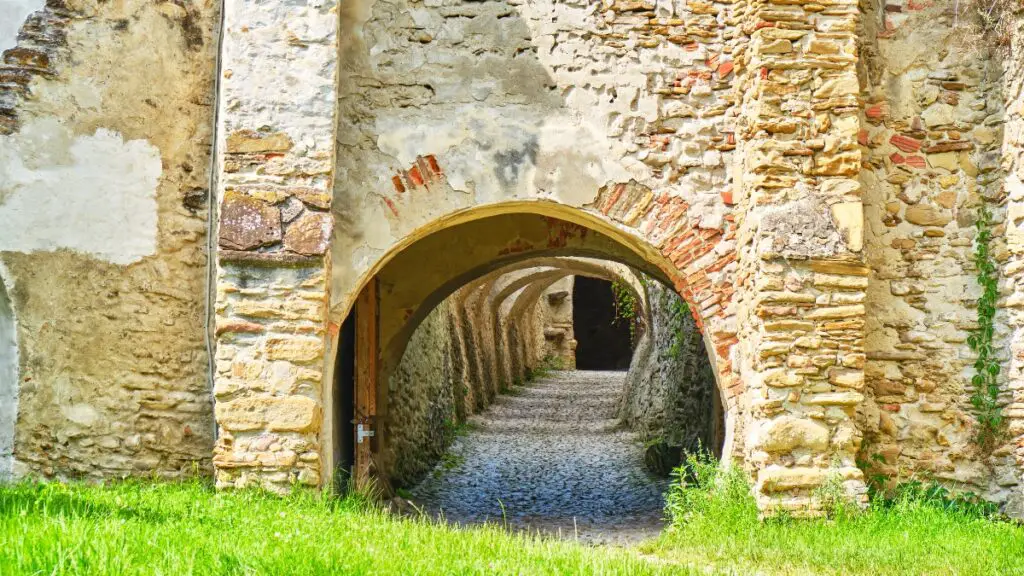
The Fortified Church of Biertan
Have you ever come across a building that seems to whisper tales of time, where every brick and beam is drenched in history? The Fortified Church of Biertan is one such marvel.
Rising majestically amidst the Transylvanian landscape, this UNESCO World Heritage site is not just a church—it’s an ode to the artistry and vision of the ages past.
Its imposing Gothic spires stretch out, seemingly touching the heavens, while the formidable walls hint at the many stories this structure has witnessed. The church is an exquisite blend of architectural styles, a tribute to the various epochs it has lived through.
Its robust fortifications, the stunning frescoes that adorn its interiors, and the unique wooden door with its intricate locking mechanism (which, by the way, is a masterpiece of medieval engineering) – every element paints a picture of an era when art and security danced hand in hand.
But beyond its physical beauty, the Biertan Fortified Church is a symbol. It epitomizes the spirit of the community it served—a bastion of hope and faith amidst the ever-looming shadows of conflict and conquest.
Purpose of the Biertan Fortified Church
Religious Function: At its core, the Biertan Church was a place of worship for the Saxon community. The Saxons, who were primarily of Germanic origin, were invited to Transylvania to defend the region and also to cultivate and develop the land. They brought with them their Lutheran faith after the Reformation, and the church was central to their spiritual lives.
Defense and Security: The “fortified” aspect of the church wasn’t just for aesthetic appeal. Transylvania, located at the crossroads of Central and Eastern Europe, was a target for various invasions throughout the centuries, ranging from Mongol and Tartar raids to Ottoman Empire incursions. These threats made it necessary for villages to have strong defensive structures. The thick walls, watchtowers, and bastions of the Biertan Fortified Church were designed to protect the inhabitants during times of siege or attack. It acted as a refuge for the village’s population in times of danger.
Social and Community Hub: The church was also a center of community life. It wasn’t just a place for Sunday worship; it was where important community decisions were made, festivals were celebrated, and communal gatherings were held.
Symbolic Statement: Architecturally, churches in medieval Europe were often constructed as symbols of power, prosperity, and faith. A strong, imposing church would signal a thriving, devout community to outsiders. It represented both the spiritual dedication and the communal wealth of the villagers.
Divorce Legends and the Reconciliation Room
Ah, now to the heart of the mystery! Amidst the solemnity and reverence, Biertan hides a playful, almost whimsical secret—the famed Biertan Romania Divorce Room. Now, you might wonder, what could a room dedicated to divorce be doing in a church? The tale, my dear reader, is as enchanting as it is curious.
Legend has it that couples contemplating the end of their marital journey were given a rather unique form of therapy. They were locked together in this tiny chamber, with just a single bed, chair, spoon, and plate. For two weeks, the bickering pair had to share, cooperate, and rediscover each other. The result? A stunning reconciliation rate that would make modern therapists green with envy.
The artifacts of this peculiar tradition—the lone bed, the shared utensils—they’re all still there, offering a silent testament to a time when separation wasn’t an easy decree but a challenge to find renewed love.
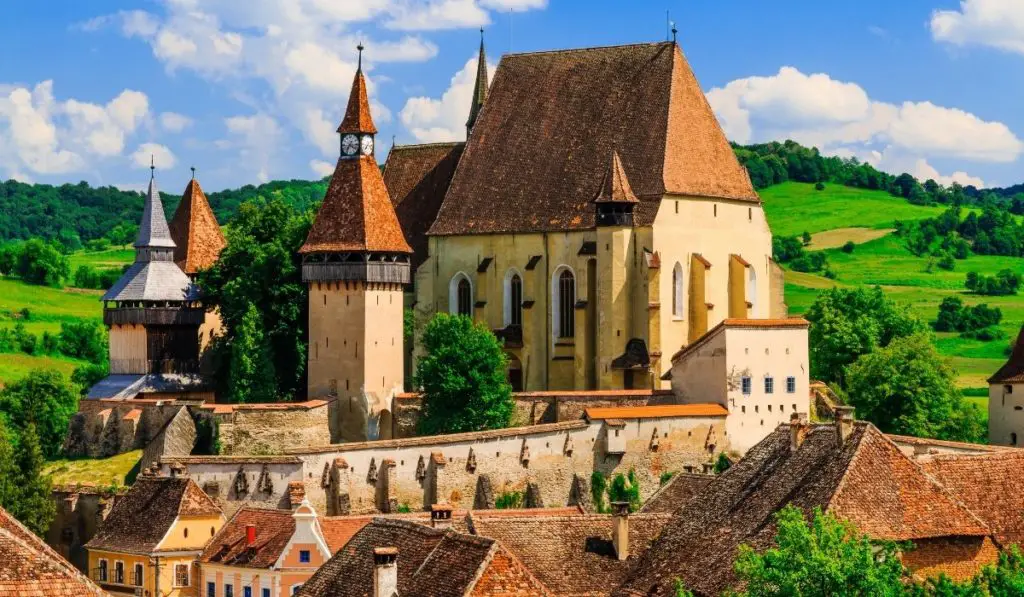
Visiting Biertan Today
The Village Experience
Stepping into Biertan feels akin to opening the pages of a beautifully illustrated folklore book, where the chapters come alive with every footstep you take. Picture it: the soft hum of conversations in the village square, children’s laughter echoing down cobblestone streets, and the aroma of traditional Romanian dishes wafting from local homes.
The village retains its authentic medieval charm, but there’s a delightful modern undercurrent. Attend a local festival, and you’ll witness a mesmerizing dance between past and present. Traditional costumes blend seamlessly with contemporary music, ancient traditions meet new-age enthusiasm, and age-old recipes are served with a side of modern flair.
Then there are the hidden pockets of the village—the charming artisan shops selling crafts handed down through generations, the cozy cafes offering a blend of local brews and stories, and, of course, the panoramic viewpoints that let you drink in the beauty of Transylvania.
Biertan Church Attractions
Today, the Biertan Fortified Church beckons not just as a religious site but as a treasure trove of experiences. Upon entering, the play of light on the ancient frescoes, the hallowed silence interrupted only by the soft footsteps, and the sheer enormity of history surrounding you is both humbling and awe-inspiring.
Your journey here should definitely include:
- Admiring the church’s famed wooden door, with its ingenious locking mechanism.
- Experiencing the solitude (and perhaps a whisper of past reconciliations) in the Divorce Reconciliation Room.
- Attending a guided tour to delve deeper into the church’s stories, some known and some whispered only in hushed tones.
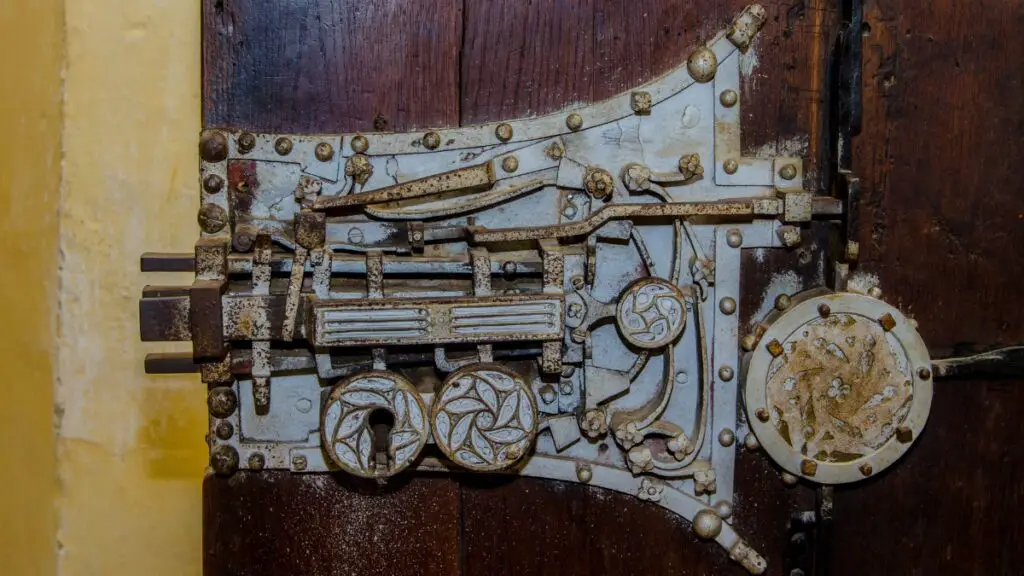
Practical Visitors’ Tips:
- Best visiting hours are during the morning when the sun bathes the church in a soft golden hue.
- There’s a nominal entry fee (10 lei [2 euros]), which contributes to the church’s preservation.
- If you’ve got time to spare, consider renting a bicycle and exploring other nearby villages
In Biertan, the past gracefully waltzes with the present, offering visitors a window into a world where time seems to have paused, allowing beauty, tradition, and tales to flourish. Whether you’re a history buff, a culture enthusiast, or simply a traveler seeking unique tales, Biertan promises a tapestry of moments, each more memorable than the last.
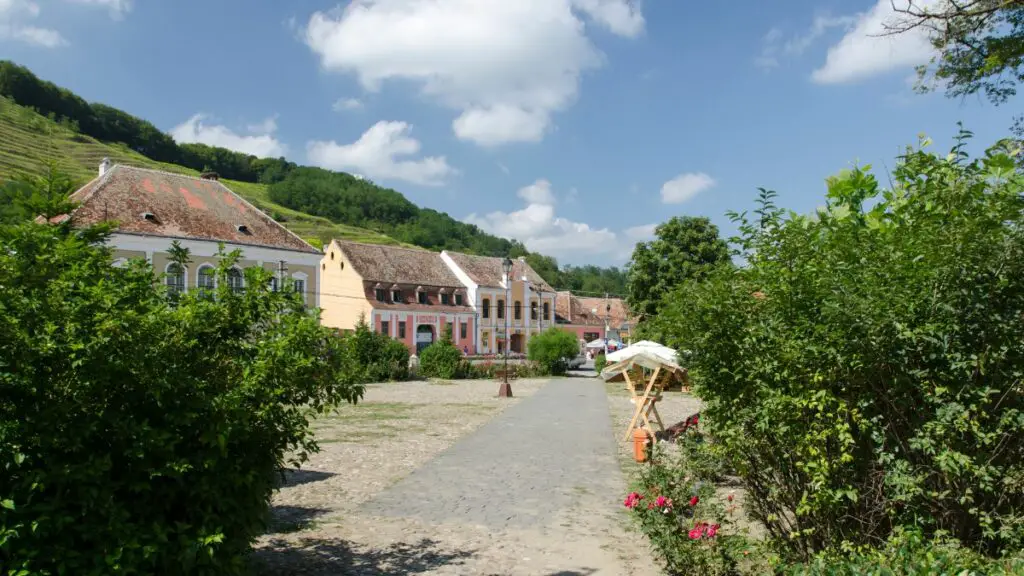
How to Get to Biertan
Before we dive into the specifics of your journey to Biertan, let’s take a moment to appreciate the allure of the gateways that pave the way to this gem of Transylvania. Whether you’re embarking from the bustling streets of Bucharest or the historic allure of Sighisoara, each city offers its own set of enticements that might tempt you to linger a little longer.
From Sibiu to Biertan
Distance: Approximately 85 km (about 1.5 hours by car)
The journey from Sibiu to Biertan is one of picturesque landscapes and whispered legends. As you drive through the Transylvanian heartland, you’ll witness a blend of rolling hills, dense forests, and quaint villages that seem to tell stories of their own.
Travel Tip: Consider making a pit stop at one of the local cafes en route. Not only for a coffee break but to also soak in the regional vibe and perhaps hear a local tale or two.
From Sighisoara to Biertan
Distance: Roughly 30 km (about 40 minutes by car)
Sighisoara, with its fortified walls and medieval charm, serves as a fitting precursor to Biertan. The journey between the two is short, but the landscapes promise a visual treat, making every moment on the road an experience in itself.
Travel Tip: If time allows, detour to some of the smaller settlements along the way. These hamlets, often overshadowed by their famous neighbors, offer authentic Transylvanian experiences.
From Brasov to Biertan
Distance: Approximately 150 km (around 2.5 hours by car)
Brasov to Biertan is a drive of contrasts—from the urban charm of Brasov to the tranquil beauty of Biertan. The route is scenic, dotted with historical landmarks and nature’s marvels.
Travel Tip: The road can be a bit winding in sections, so ensure you’re well-rested before this picturesque drive.
From Cluj-Napoca to Biertan
Distance: Roughly 165 km (about 2.5 hours by car)
Embarking from the cultural hub of Cluj-Napoca sets the tone for a journey that’s as enriching as the destination. The drive showcases the diverse beauty of Transylvania, from sprawling plains to majestic mountains.
Travel Tip: Take a leisurely pace. There are several viewpoints and resting spots that invite you to pause, reflect, and capture memories.
From Bucharest to Biertan
Distance: Approximately 330 km (around 5 hours by car)
The journey from Romania’s bustling capital to the serene village of Biertan is transformative. Watch as the urban landscapes give way to the timeless beauty of the Transylvanian countryside.
Travel Tip: It’s a long drive. Plan for breaks, hydrate, and perhaps carry along a playlist that resonates with the spirit of Transylvania.
Navigating to Biertan isn’t just about reaching a destination; it’s a journey through the heart of Romania, filled with panoramas, histories, and whispers of legends that have shaped this beautiful land. So, as you set forth, let the road guide your senses, and embrace the allure of the unexpected detours. After all, in Transylvania, every path holds a story.
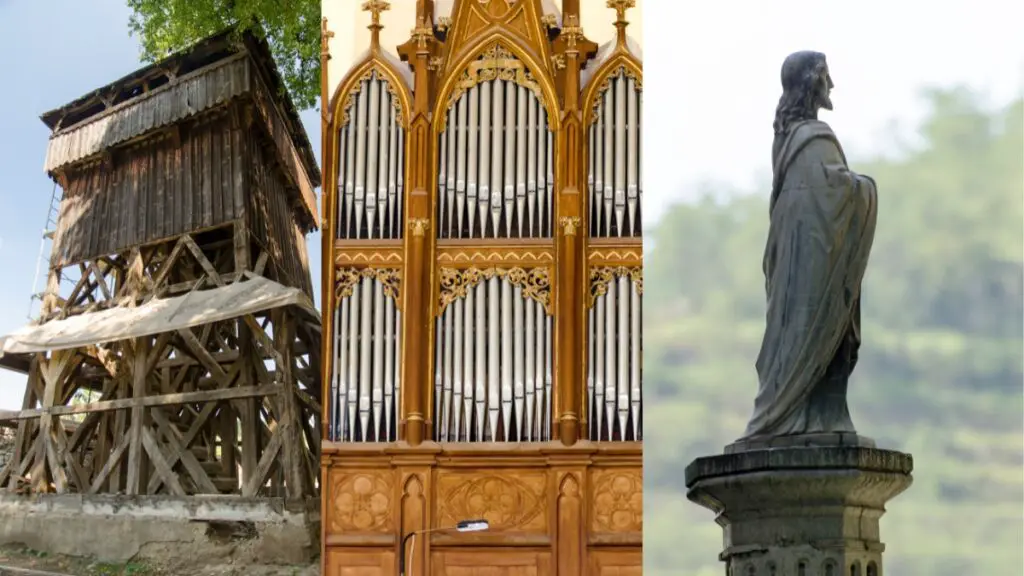
Wrapping Up: Biertan’s Timeless Allure
A Tapestry of Legends and Realities
Biertan, nestled in the heart of Transylvania, offers more than just postcard-perfect views and historical landmarks. It is a voyage into a realm where the fabric of time weaves together tales of yesteryears with the pulse of today. Whether it’s the whispered legends of the Divorce Reconciliation Room or the tangible touch of centuries-old bricks of the fortified church, Biertan stands as a testament to humanity’s innate desire to create, preserve, and narrate.
The Essence of Transylvania
If Transylvania were to be distilled into a single village, Biertan might just be it. It’s a microcosm of the region’s spirit—enigmatic yet welcoming, ancient yet alive, steeped in myths yet rooted in realities. From the Saxon influences evident in its architecture to the Romanian warmth in its hospitality, this village embodies the diverse influences that have shaped Transylvania.
More Than Just a Visit
Embarking on a journey to Biertan is not merely about ticking off another tourist destination. It’s about immersing oneself in a world where every cobblestone has a tale, every breeze sings of ancient ballads, and every interaction adds a new chapter to your personal travel story.
Consider this: How many places offer you a chance to step back in time while firmly planting your feet in the present? To challenge the norms of love and relationships in a quaint room of reconciliation? To navigate through the heart of a land known for its tales of the supernatural, yet find the most heartwarmingly human stories?
As you wrap up your journey, take a moment to breathe in the essence of Biertan. Let its tales, both told and untold, resonate within. And as you depart, carry with you not just memories, but a piece of Transylvanian magic—a spell that, long after you’ve left, keeps beckoning you back to this enchanting realm of whimsy, wonder, and timeless wonders.

